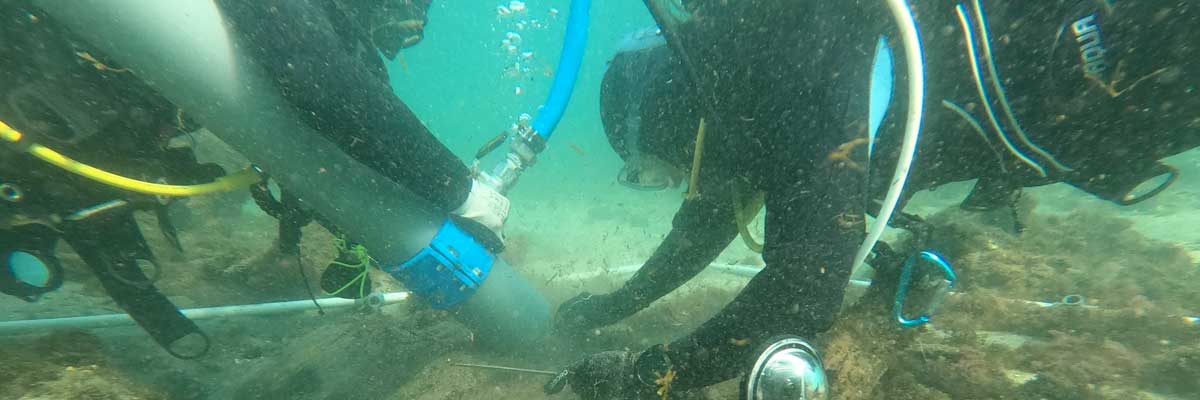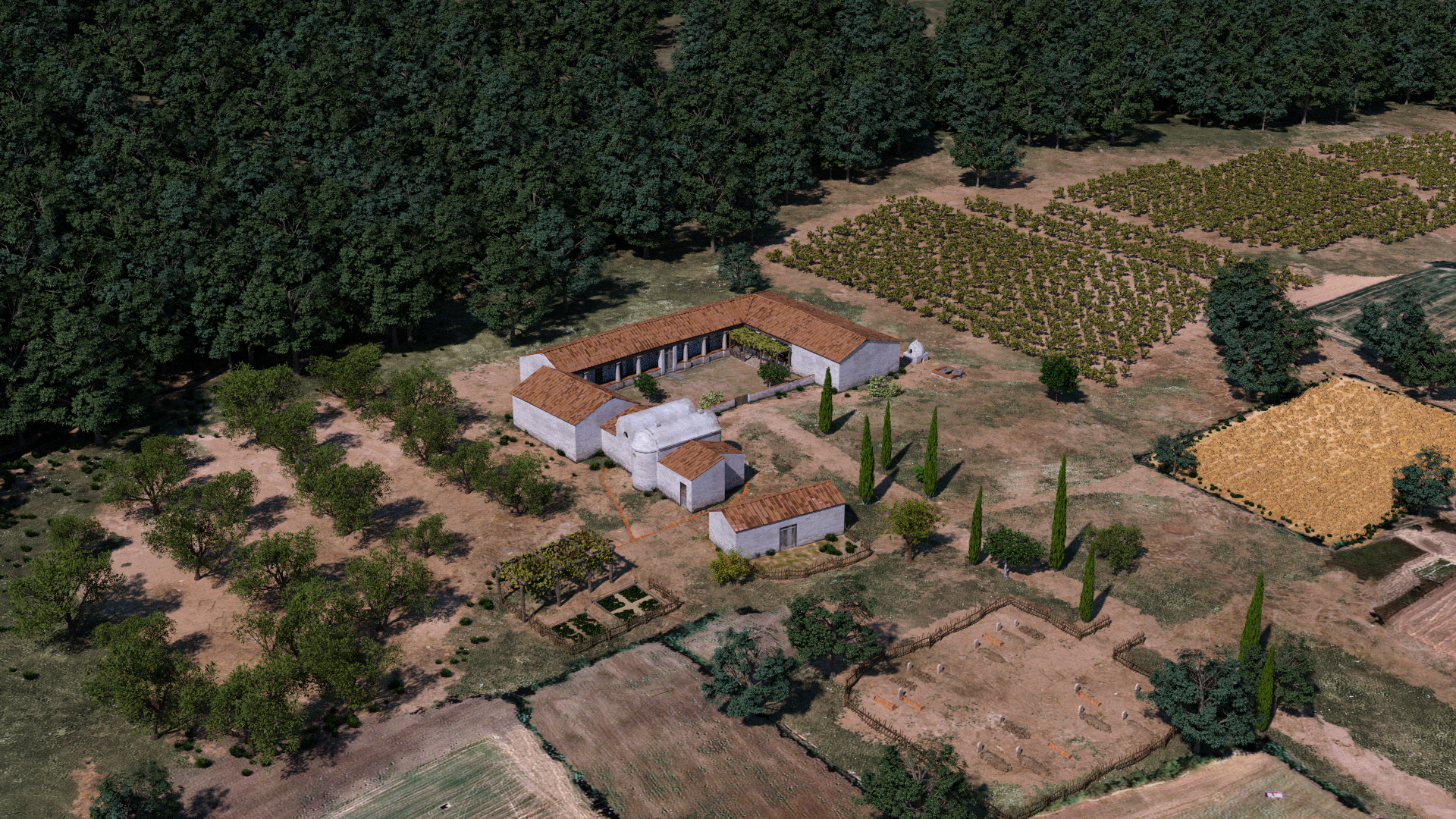
Between the Pillars of Hercules, underwater archaeology of a privileged space. The Bay of Algeciras (HERAKLES)
The Bay of Algeciras constitutes a privileged maritime space. A wide, deep and safe bay located in a strategic naval crossing point that allowed the development of an intense occupation with clear maritime links. Throughout the history of research, numerous studies have highlighted the importance of this space focusing mainly on three phases: the Ancient times, with 4 urban settlements on its coastal margins; the Medieval Period, becoming the border and point of entry to the Peninsula and the Mediterranean; and the Modern Period, scene of a continuous confrontation by the naval control of the Strait. The Bay of Algeciras stands out in all historical periods due to its maritime importance and its use as a privileged harbour area.
However, of the approximately 125 archaeological sites of various chronologies that are known in the area, only 4 are of underwater nature, and only 1 can be considered a wreck. The level of knowledge and documentation of the Underwater Cultural Heritage (UCH) under these waters is scarce considering the historical importance that the sea and the nautical activities have played in the Bay.
That is why we propose a research project with the main objective of register and study various underwater archaeological zones of the Bay. The results will allow us to analyze and evaluate the maritime history of the bay, while contextualizing the coastal landscape and the port settlements of its surroundings.
The UAH of the Bay of Algeciras needs to be studied in order to complete a historical discourse that until now, has taken into account in a preferential way information coming from terrestrial contexts, in a space whose main activity and value is maritime. It is a heritage that is also subject to a series of high-impact risks such as port activity (dredging), industrial (works) or tourism (looting), urban development and the changes that these actions may cause in the marine environment
The main objective of this project is, therefore, the documentation, research and enhancement of the Underwater Archaeological Heritage of the Bay of Algeciras. For this, it is intended to address three research problems:
• Anchorages and nautical activity in the Bay of Algeciras from a diachronic perspective. We understand the Bay as a space for exchange and maritime commercialization. These activities left their mark through archaeological evidences in anchorage or wreck contexts.
• Identification and evaluation of urban, industrial or climate change threats for the conservation of this heritage.
• Values of use and tourist awareness of the Underwater Archaeological Heritage of the Bay of Algeciras. To this end, a pioneering pilot project will be carried out in Andalusia for the creation of an archaeological site that can be accessed through an underwater archaeological park in the Getares area.

Period
No time limits
Institution
University of Cadiz
Web and social networks
www.uca.es
https://www.uca.es/category/arqueologia-subacuatica/ (under construction an own space in the research group’s web site) http://arqueologianauticaysubacuatica.uca.es/investigacion/proyectos-de-la-linea/
https://www.facebook.com/arqueologianauticaysubacuatica/
https://www.facebook.com/culturacientifica.uca/
Principal Investigators
Dr. Felipe Cerezo Andreo
Dr. Alicia Arévalo González
University of Cadiz
Location
Bay of Algeciras, Cadiz. Spain
LOCATION
RESULTS
In this short time of project we have achieved results with a great potential for the future. The study of the historical documentation and its classification, categorization and analysis has allowed us to create several databases:
-Naufragios: contains more than 2000 shipwrecks that occurred in the Algeciras area from the Second World War to the end of the 18th century,
– CartHis: With 128 records of historical cartography containing information related to the maritime cultural landscape of the study area and shipwrecks in the Strait of Gibraltar.
– FotHis: With more than 280 records of historical photographs of the bay and underwater finds.
– Port Works: With 58 records (and several pending study) of historical port works carried out in the bay.
– IAS: 97 records of reports of underwater archaeological interventions carried out in the Bay for the control, generally of port works.
– YACSUB: This is our database of identified and intervened archaeological sites. It has 151 records of wreck-type sites, mostly dating from the 5th century B.C. to the mid-19th century.
-Museums: It is the database that studies and groups the information of archaeological objects of underwater origin that are located in museums in the area.
In summary, of the 151 sites documented from 2021 to March 2023, 24% have been studied and documented using the non-intrusive techniques developed, making it possible to know their chronology, typology and state of conservation. Of the sites worked, 124 are shipwrecks, 7 historical anchorages, 20 isolated objects. In reference to the chronology, 7 are from the Punic period, the oldest from the 5th century BC, the Timoncillo I wreck. 23 are from the Roman period, especially in the area around Carteia. Two late Roman shipwrecks, such as the Anclote, 4 medieval and 24 from the modern period, the latter of various nationalities and types, closely linked to the conflicts with Gibraltar.
FOTOS
- Bite marks confirm gladiators fought lions at York (Heritage Daily 23/04/2025) - 24 April, 2025
- Ancient DNA challenges long-held assumptions about the Mediterranean Phoenician-Punic civilization (Phys.org 23/04/2025) - 24 April, 2025
- Neolithic agricultural revolution linked to climate-driven wildfires and soil erosion (Phys.org 22/04/2025) - 23 April, 2025























